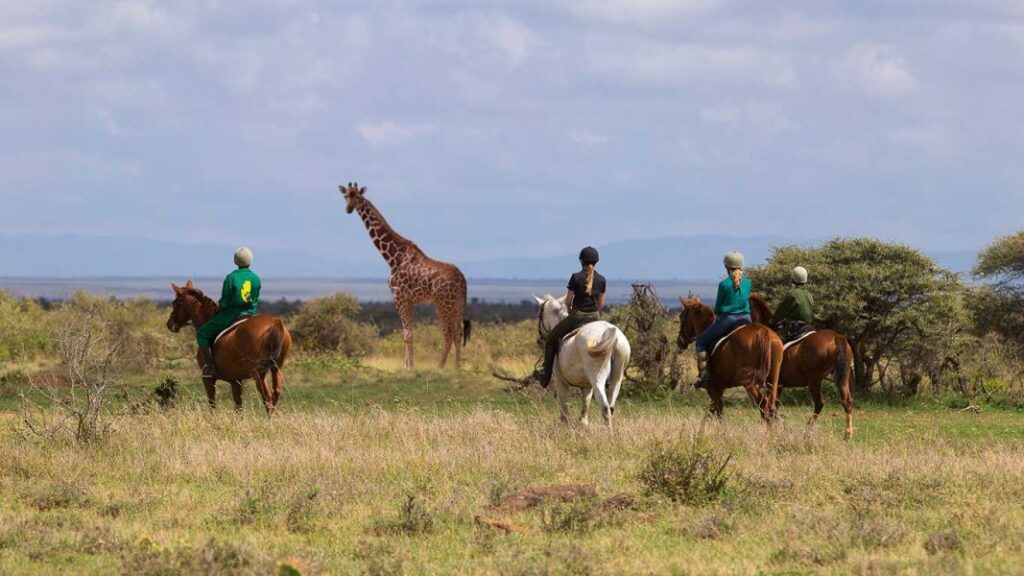- What vaccinations to get
There is No mandatory vaccination (Though check with you country whether you will require yellow fever upon return to your country after Africa Visitation), but you should also be up to date on other vaccinations like hepatitis A, typhoid, cholera, and meningitis requirement from your country also
- When to go
The variations in altitude and terrain create contrasts in climate. The coast is hot and often humid, mornings in the central highlands can be cool, while in the north and northeast, the days are dry and very hot.
In the areas most frequented by visitors, the weather is little short of perfect, it is neither too hot nor too cool with long sun-filled days.
Day and night in Kenya are almost equal the whole year round with sunrise between 6:00 and 6:30 am and sundown between 6:30 and 7:00 pm.
Over most of the country there are two rainy seasons. The short rains normally occur from November through early December and the long rains from April through to early June. Rain usually falls in the late afternoon preceded by bright, sunny and fresh days. In the western Rift Valley, western Kenya and the Lake Victoria region there is really no dry season although rainfall is lowest in January and February. However, rainfall seldom continuous over long periods.
July – September are typically the best months to see the migration in the Masai Mara.
- How much to tip
Tipping depends on service received – Below is a guideline
- Full Day Group Tour: $5-10/person
- Full Day Private Tour: $15-20/person
- Full Day Driver: $10-20/day/group
- Safari Guide: $15/person/day
- Transfers: $10/car
- Luggage Porter/Bell Boy: $1/bag
- Restaurants: 10% of bill
- Safety
All parks have guarded entry and exit points, and your driver guide will remind you not to leave the vehicle on game drives unless you’re in a designated location.
- Packing List
Plastic bags of any kind are not allowed in Kenya. This includes
Shopping / grocery bags
Duty-free bags
Ziploc baggies
Garbage bags
Instead of plastic bags, use dry bags, reusable bags, and a rain cover (day pack). If you arrive with any plastic bags in your carry-on or checked luggage, remove them before getting on the airplane. Don’t risk a fine!
Packing Advice
It’s best to leave all unnecessary valuables and jewelry at home.
- Clothing
Your clothing should be lightweight, breathable, hand-washable, and quick-drying, preferably moisture-wicking and non-cotton.
Long pants (zip-off pants are very useful)
Shorts, mid-thigh or longer
Short-sleeved shirts
Long-sleeved shirts
Undergarments
Sweater, jacket, windbreaker
Rain jacket and/ or rain poncho
Sun hat with brim and chin strap
Bandana (for dust, washing, etc.
- Footwear
Your daily activities may get your shoes dirty or muddy. Streets can be uneven. Light sandals are not good for daily tours and hikes, but they are nice for relaxing at your hotel.
Sturdy, comfortable walking shoes, closed toe, preferably waterproof
Tennis shoes, sandals, dressy shoes, and/or flip flops
Comfortable, breathable socks
- Baggage
Suitcase or duffel (check weight restrictions for internal flights)
Day pack for daily activities and easy access (rain cover is nice)
Waterproof plastic bags for organizing gear and dirty clothing (Ziplocs and garbage bags work)
Packing cube, compression bag, stuff sacks, clear toiletry bag for airplane
Money belt, security pouch, document organizer
- Electronics
Store electronics in sealed water-proof bags (double bagged if possible). Remember to set the date and time on your cameras.
Headlamp or flashlight, extra batteries
Camera, lenses, memory disks, batteries, charger/power cord
Video camera, memory disks, batteries, charger/power cord
Tripod (travel size)
Go Pro, memory disks, batteries, charger/power cord
Lens cleaning cloth
Cell phone, power cord, battery backup, headphones
Watch/Alarm clock
Calculator (for currency conversion)
Electricity converter/adapter
Google Translater App
Check with your cell phone provider for international use, or buy an unlocked cell phone get a sim card locally)
- Day Pack
Take along any items you need for the day in a separate day pack:
Binoculars
Camera + disks, batteries, lenses, tripod, cleaning cloth
Video camera, cell phone, Go Pro, etc.
Water
Snacks + to share with guides, other travelers, etc.
Wet wipes
Hand sanitizer
Passports
Money
Sunscreen
Bug repellent
Hat
Bandana
Hair binder
Jackknife
Magazines/books/headphones/kite/frisbee
Safari notebook + pen
Safari wildlife book
- Toiletries
Soap
Shampoo, conditioner, hair gel
Hairbrush, comb, mirror, hair ties
Toothbrush, toothpaste, floss
Deodorant
Moist towelettes (handy-wipes)
Hand sanitizer
Lotion (Badger foot balm is also helpful)
Sunscreen
Lip balm with sunscreen
Small towel and washcloth
Toilet paper
Facial tissue
Shaving supplies
Nail clippers, nail file, nail brush
Insect repellent
Q-tips
Sewing kit
Feminine products
Cosmetics
- Documents
Passport (make sure it is valid 6 months after your trip)
Visas for all countries as necessary
Airline tickets, e-tickets (make sure name on ticket matches name on passport)
Copy of AWR travel itinerary
Medical insurance card
Address book
Business cards
Document organizer
Make copies of passport, visas, drivers license, airline tickets/schedule, travel itinerary, credit cards (front and back), travelers checks’ numbers, frequent flyer numbers, travel insurance, and emergency contact information. Leave a copy with someone at home and put a copy in a travel companion’s luggage and email them to yourself (or store in Cloud). Put copies of your travel itinerary in each checked bag.
- How to get a visa?
As of January 1, 2021, all travelers will be required to acquire a Kenyan visa by applying online from the electronic visa (e-visa) webpage in advance before leaving their home country or boarding an aircraft. The electronic visa (eVisa) for Kenya is mandatory for all visitors traveling to Kenya from countries that require visas to enter Kenya. No visas shall be issued on arrival in Kenya.
You should apply for the e-Visa no less than 48 hours in advance of the date you plan to enter Kenya.
- Go to the the eVisa Visitors Create an Account button at http://evisa.go.ke/evisa.html
- You will be asked to upload a digital passport photograph (maximum size 500 pixels by 500 pixels).
- Print a copy of your visa to present to the immigration officer at your point of entry into Kenya.
Visa Fees (Visa and Mastercard accepted):
- Single entry Visa $51
- Transit Visa $21
- Children 15 and younger $0
Note:
Kenya, Rwanda, and Uganda: The East Africa Tourist Visa allows travel between these three countries using the same multiple entry visa. This multi-country 90-day visa is available to tourists with a valid passport (valid for not less than 6 months from the time of visa application). You should apply for the visa from the first country you plan to visit. The East Africa Tourist Visa costs $100.





